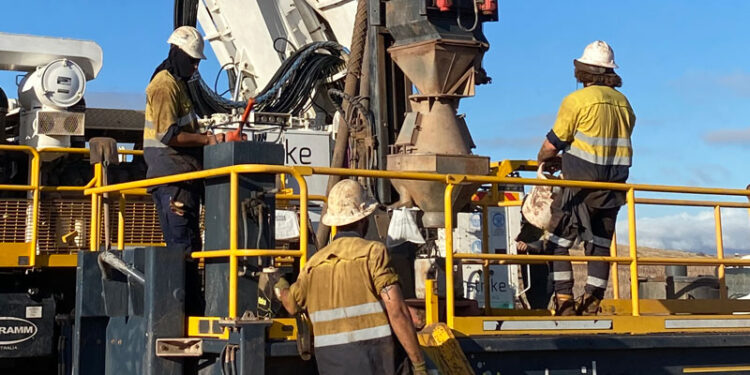Empire Metals Limited (LON: EEE) has confirmed the presence of ilmenite, an important economic titanium-iron oxide mineral, from results at its first petrographic and mineralogical studies on the high-grade titanium discovery at the Pitfield Project, Western Australia.
Managing director, Shaun Bunn, said, “It is very exciting to see the results from our initial petrographic and mineralogical studies, confirming the presence of ilmenite within this exceptional titanium-rich mineral system. We have a magnetics anomaly covering 40km by 8km, whose core is 30km long and extends to a depth of at least 6km. This magnetics anomaly appears to be coincidental with the currently known extent of the ilmenite mineralization.”
As part of the petrographic study, an initial mineralogical assessment report was carried out on samples of RC drilling chips taken from four drill holes at Pitfield.
The RC chip samples have all been interpreted to be weakly metamorphosed sedimentary rocks containing quartz and feldspar as the dominant components.
All the samples contain various amounts of iron oxides, iron-titanium oxides, chlorite, muscovite, epidote, and carbonate with minor amounts of rutile, leucoxene, chalcopyrite, apatite, and tourmaline.
Importantly from an economic perspective, the dominant iron and titanium oxide minerals, are hematite (Fe2O3), and ilmenite (FeTiO3), with lesser rutile and leucoxene. Most importantly, only minor magnetite (Fe3O4) was identified within the samples.
There is evidence of some trace amounts of titanomagnetite, but the vast majority of the iron oxide and iron-titanium oxide minerals are hematite and ilmenite respectively.
This has significant economic implications as titanomagnetite can be very difficult to process, unlike hemo-ilmenite which is currently processed by Rio Tinto at its Quebec project.
Additional sampling and detailed mineralogical work by Empire Metals will determine if hemo-ilmenite is an important mineral at Pitfield.
Pitfield appears to belong to a new class of soft sedimentary rock type titanium deposits that are stratabound and hosted within a layered succession of clastic sedimentary beds.
To find out more, please visit www.empiremetals.co.uk
To read more articles like this, please visit: https://www.theassay.com/news/












